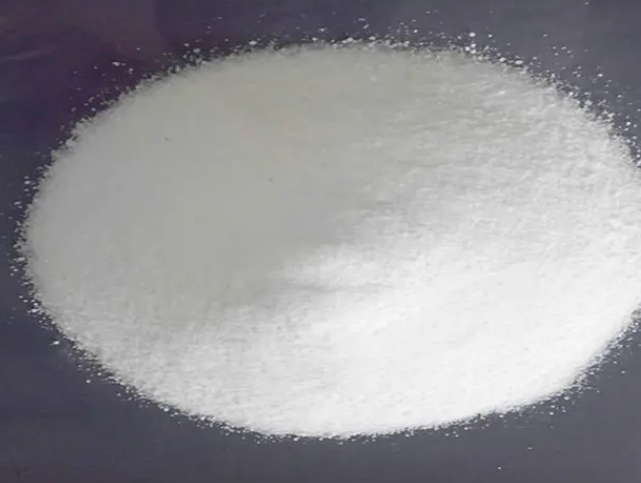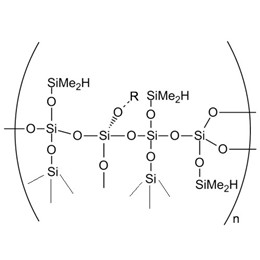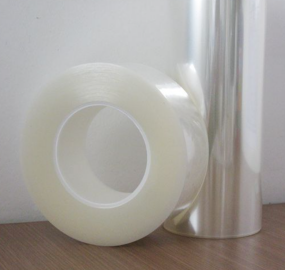With the development of science and technology, electronic appliances are being used more and more widely in daily life. Silicone, as a new material, has been introduced into many fields(such as food-grade silicone) because of its excellent performance, and it also excels in electrical and electronic appliances(pressure-sensitive adhesives and so on). How to use silicone resin for electrical appliances?
Silicone insulating varnish has excellent heat resistance and electrical insulation properties and is used on surfaces such as resistors and capacitors, with the advantages of moisture resistance, heat resistance, insulation, resistance to temperature alternation, high mechanical strength of the varnish film, good adhesion, resistance to friction, and stable insulation resistance. There are four main forms of composite materials of silicone resin, including silicone glass paint cloth, silicone laminated plastic, silicone mica products, silicone film pressure plastic, etc. These composite materials are widely used in the field of electrical motor wrapping insulation or lining thermal insulation materials(sodium silicate), slot wedge insulation of H-class motors, high-temperature relay shells, and radar radomes of high-speed airplanes.
The following introduces the use of silicone resin in electronic and electrical appliances from 6 aspects.
- Why choose silicone resin?
- What is the flame retardant mechanism of silicone resin?
- What is the temperature resistance mechanism of silicone resin?
- What are the application fields of silicone resin?
- How are silicone resins applied as coatings?
- How to make electronic performance better?
1. Why choose silicone resin?
Silicone resin also has a perfect use in electronic products, because its electrical insulation performance is close to glass products, so it has a special ability, that is, ozone resistance and corona resistance, water repellent, and non-reactive with other substances. With these two abilities, it is possible to make silicone resin very resistant to high voltage, so it can be used for high voltage-resistant purposes. It is user-friendly.
(1) Silicone resins can be used in the manufacture of various thermoplastics, such as thermoplastic rubber, thermoplastic pipes, etc., providing excellent heat resistance for these thermoplastics.

(2) Silicone resin can also be used in the manufacture of various thermoplastic fibers, such as carbon fibers, glass fibers, etc., so that these thermoplastic fibers have excellent heat-resistant properties.
(3) Silicone resins can also be used in the manufacture of high-adhesion waterproof materials, such as coatings, sealants, etc., which can effectively prevent water penetration
(4) Silicone resin can also be used for the manufacture of general-purpose resins used for antioxidants, which can effectively avoid the heat generated by the combustion of substances on the surface of the object damage.
(5) Silicone resin can also be used to manufacture anti-friction rubber, to avoid unnecessary friction, in order to fully express the performance of the product.
XJY-8206 Vinyl Methyl Siloxane Resin
It is made by polymerizing four functional siloxanes (Q) and one functional methyl siloxane (M). Silicone polymers and silicone compounds made of VMQ materials can provide a wide temperature range of abrasion resistance, weathering resistance, compression coagulability resistance, UV radiation resistance, and other physical properties. Therefore, they can be applied to electronic and electrical appliances and other industries.

XJY-8207 Hydrogen-containing MQ Resin
It is polymerized from four functional siloxanes (Q) and one functional methylsiloxane (M). xjj -8207 can be used as an intermediate for other functional groups of MQ resin, or as a special cross-linking agent. It can be applied to electronic and electrical appliances and other industries.

2. What is the flame retardant mechanism of silicone resin?
Silicone resin has high heat resistance and chemical stability and can form a carbon layer under fire conditions, thus playing the role of heat insulation, oxygen barrier, and inhibition of combustion. In addition, the molecular structure of silicone resin contains a large number of silicone-oxygen bonds, these bonds can effectively inhibit the combustion process of the polymer chain, reduce the combustion rate, and enhance the flame-retardant properties of the material.
The flame retardant mechanism of silicone resin mainly includes the following aspects:
(1) Charcoal layer formation:
the thermal decomposition of silicone resin occurs at high temperatures, generating a charcoal layer, which has a high thermal and oxygen resistance and can effectively insulate heat and oxygen and inhibit the combustion process.
(2) Heat-absorbing effect:
In the combustion process of silicone resin, the silicon and oxygen bond in the molecular structure is broken, absorbing a large amount of heat and reducing the temperature of the combustion system.
(3) Free radical inhibition:
silicone resin can react with free radicals during the combustion process to reduce the generation of combustible gases and free radicals and lower the combustion rate.
3. What is the temperature resistance mechanism of silicone resin?
An attractive characteristic of silicone resins is their excellent temperature resistance. This excellent temperature resistance is a unique property of silicone resins and covers a large number of functions of other elements. The temperature resistance of silicone resins is characterized by a stable temperature range of -90 to 330°C. This wide temperature range can be maintained. The ability to maintain this wide temperature range is in contrast to most organic materials. Other organics solidify above 0°C and begin to fade and oxidize at 120°C. Silicone resins, however, are inherently more resistant to oxidation than silicone resins. However, due to its inherent ultraviolet (UV) and antioxidant properties, silicone resin weathering is very good, and will not fade and crack with the passage of time as in the case of organic substances, so it is very suitable for outdoor use.

4. What are the application areas of silicone resins?
Silicone resin has a wide range of application prospects, mainly including the following aspects:
(1) Electrical and electronic field:
Silicone resin can be used for insulation, encapsulation, and coating of electrical and electronic products to improve the fire safety of products. Organic silicone resin can be used as the insulating layer of wires and cables to protect the wires from the influence of the external environment and improve the service life of wires and cables. In addition, it can also be used to manufacture insulating parts of electrical equipment, such as insulators, insulating gaskets, etc., to ensure the normal operation of electrical equipment.

(2) Automobile manufacturing field:
Silicone resin can be used for automotive interior materials molds, flame retardant modification, to improve the fire safety of automotive interior materials. Organic silicone resin adhesive is widely used in the assembly and maintenance of components. Silicone resin sealants are also used for sealing various equipment and pipelines because of their good sealing and aging resistance. Silicone resins can be used as molding materials for the manufacture of a variety of complex-shaped parts. Silicone resin molding materials have excellent high temperature and oxidation resistance stability and are suitable for use in harsh environments such as high temperature and high pressure. Since silicone resin has excellent flame-retardant properties, it is often used as a base material for flame-retardant materials. In areas with high fire protection requirements, such as construction, transportation, etc., silicone resin flame retardant materials are widely used to effectively prevent the occurrence and spread of fire.
(3) Aerospace field:
Silicone resin can be used for insulation, encapsulation, and coating of aerospace vehicles to improve the fire safety of aerospace vehicles. Silicone resin coatings are suitable for a variety of harsh environments under the coating needs, often used in aerospace and other fields of coating, to provide effective protection for the substrate. Silicone resin can also be used to prepare wear-resistant, anti-corrosion, anti-fouling, and other special features of the coating, to meet the needs of different industrial fields.
5. How are silicone resins applied as coating?
Silicone-modified Polyester or epoxy resin paints can be used as class F insulating paints, with a long-term heat resistance of 155℃ and low viscosity. It has high corona resistance, moisture resistance, good adhesion to the substrate, good chemical resistance, and good mechanical strength. Heat resistance is improved compared with unmodified polyester or epoxy resin. It is used for heat-resistant and moisture-resistant insulation protection coating on the surface of F-class insulated electrical components. The coating film has high mechanical strength, abrasion resistance, oil resistance, and good adhesion. It can withstand high and low temperatures (-50~150℃) for many times without cracking the paint film.
XJY-8010/8250 Flake Silicone Resin
It is a solid powder resin that provides excellent transferability and water resistance and also forms a durable film that lasts. It can be used as a coating in electronic and electrical appliances and other fields.

(1) Silicone high-temperature insulating and protective varnish for semiconductor components
This paint has high dielectric properties, high purity, certain limitations on harmful metal content, strong adhesion, good thermal stability, moisture resistance, protection of semiconductors, and is suitable for high-temperature and high-pressure places.
(2) Silicone insulating and protective coatings for printed wiring boards, integrated circuits, and solar cells
The tough film, has good dielectric properties, weather resistance, ultraviolet resistance, anti-dust pollution, and moisture resistance, can dry at room temperature, strong light transmission force, suitable for printed circuit boards, integrated circuits, and solar cell insulation protection.
(3) Semiconductor contact coating
In semiconductor components, chips and contacts are extremely sensitive to impurities, dust, and moisture. Semiconductor contact coatings (JCR) need to be used in a timely manner to passivate and protect, otherwise deviations and instability will occur. There are two types of commonly used contact coatings: hard coatings (condensed silicone resin) and soft coatings (including condensed and + molded one-component and two-component silicone rubber). Because the contact coating is directly coated on the surface of the semiconductor chip, so there are strict limits on harmful impurities.
6. How to make better electronic performance?
Silicone resin intermediates are solids containing hydroxyl reactive groups and can be copolymerized and modified with organic resins, such as silicone-modified polyurethane resins. In other adhesive systems, the introduction of a compatible product increases the weathering or heat resistance of the system; silicone resins provide good water resistance and water immersion stability. How do you improve the competitiveness of your mold products?
XJY Silicones is one of the leading silicone MQ resin and VMQ silicone manufacturers in China, with more than 30 years of R&D and manufacturing experience in the silicone industry as well as more than 15 related patents and technical support. Our silicone resin raw material products can meet the needs of the electrical field and support the provision of diversified customized solutions.




